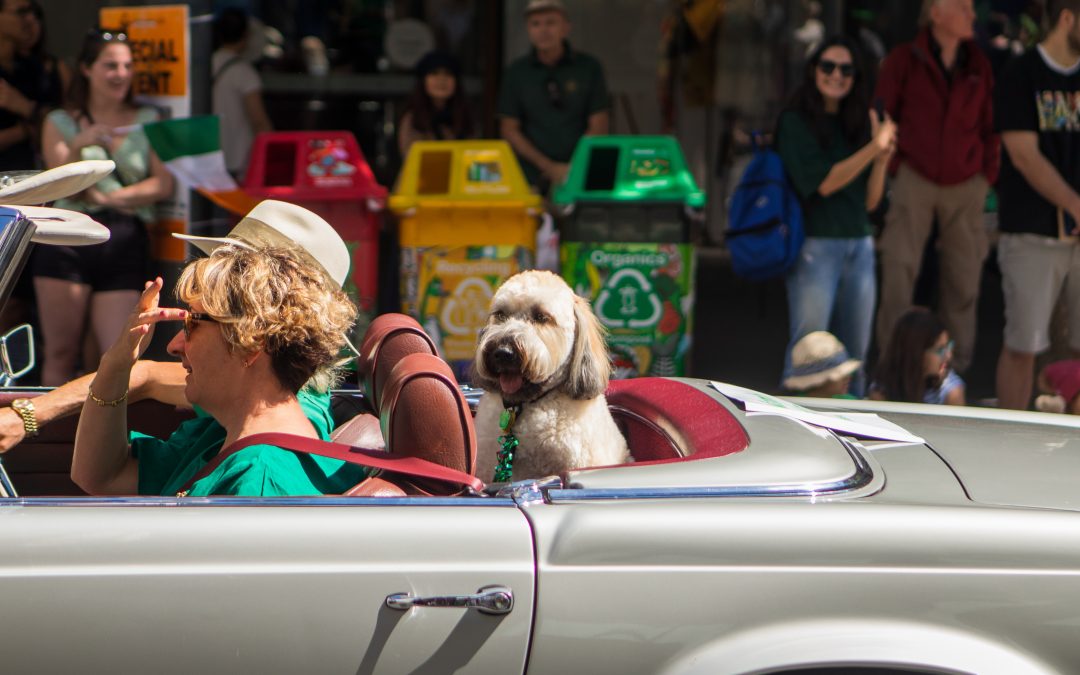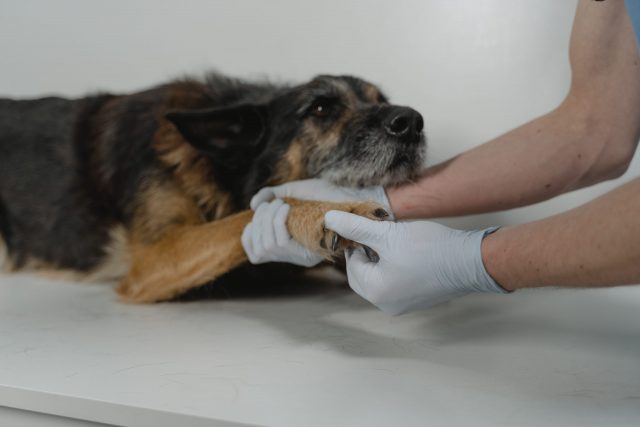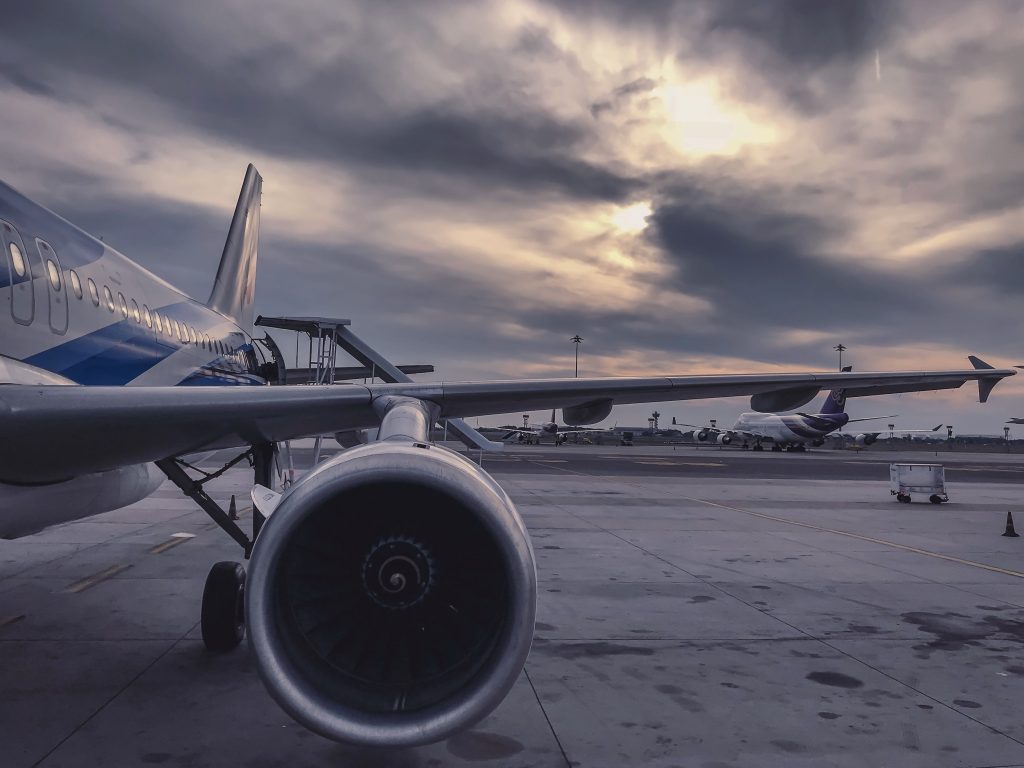With summer on the horizon, travelers are eagerly beginning to make their vacation and summer travel plans. For many travelers, leaving their pets behind – at home with a pet sitter or in a kennel – is simply not an option. Fortunately, traveling with pets is becoming increasingly easier as more airlines and hotels/motels have begun catering to the pet crowd.
Planning a trip that includes your pet requires more than just booking a pet-friendly hotel room. To ensure your pet has a happy and safe trip, you must make sure she has everything she needs from bringing enough medication to preparing for an emergency. Following are ten steps that will help ensure your vacation with your pet goes as smoothly as possible.
Tip One: Ensure your pet is healthy enough to travel
Before you hit the road or take to the skies, schedule a physical for your pet at her veterinarian to ensure she is healthy enough for the trip. If your pet is older or has health problems, discuss those problems with your vet to determine whether travel would be detrimental.
Tip Two: Create an emergency kit
If you don’t already have a pet emergency kit, create one. What goes in your pet emergency kit, to some extent, will depend on the type of pet you have.
For example, if you have a rabbit, your emergency kit should include simethicone, a dropper, Critical Care formula, canned pumpkin, and a thermometer.
Dogs, on the other hand, might need a muzzle in the emergency kit, and an emergency kit for birds may need magnifying glasses, wooden sticks for use as splints, saline solution, wound disinfectant, styptic powder, and syringes.
Essentials for all pet emergency kits include: cotton swabs, gauze pads, gauze, adhesive tape, medicine droppers, scissors, a blanket, tweezers, forceps, hydrogen peroxide, Ipecac, Kaopectate, antibacterial ointment, tweezers, and a plastic storage container.
Your pet’s emergency kit should also include a list of vets in your destination city or cities.
Tip Three: Compile a vet list
Compile a list of vets, including emergency vets, in your destination city or cities. No matter how healthy your pet is, emergencies do happen. By having a list of potential vets at your destination, you won’t have to deal with the added stress of trying to find a qualified vet to care for your injured or sick pet.
Compiling a list of vets is particularly important for those who have pets other than cats and dogs. Most veterinarians specialize in canine and feline health. But, if you have what is considered an exotic pet – a rabbit, a bird, a ferret, a chinchilla, and so on – you probably already know how difficult it is to find a qualified vet in your hometown, making it doubly important that you find qualified vets and emergency vets at your destination.
Your veterinarian may be able to offer recommendations. But, if he can’t, start your research by going online. Join a group or a message board dedicated to pets, and ask if anyone can offer recommendations, or check out the online yellow pages for vets in your destination city.
Once you’ve compiled a list of vets, call each of them to determine their hours, what type of pets they generally care for (this is especially important if you have an exotic pet), and whether or not the practice has after-business hours for emergencies, or if you’ll be forwarded to an emergency vet after hours. Jot down the answers to your questions so you can easily reference what each vet offers.
Make several copies of the list: Keep one in your pet’s emergency kit and one in your suitcase. You may also want to keep the list in your pocket, purse, fanny pack, or backpack in case you need it while you’re sightseeing or out with your pet.
Tip Four: Ensure your pet, if she’s a dog or a cat, has current ID tags
Most cities and towns require dogs to have identification tags. Make sure your pet has current ID tags – with her name, address, and a phone number where you can be reached should she become lost.
Also, be sure your pet is current on her shots, and make sure her rabies shot tag is on her collar.
Tip Five: Pack a suitcase for your pet
As with people, there are just some things a pet has that cannot be left behind. When packing your pet’s suitcase, make sure you have copies of her medical records, shots, and immunizations (if applicable, of course). If your pet is on medication, bring enough for the whole of your trip plus a few extra days’ supply in case you decide to stay longer.
Your pet will also need her food bowl, water bowl, a supply of food, a brush for grooming, litter (if applicable), a pooper scooper (if applicable), plenty of plastic bags, and an emergency kit. If you have a dog, she’ll also need her collar and leash.
Your pet’s suitcase should also include a few toys and something – like her favorite blanket – that reminds her of home.
Tip Six: Flying? Choose direct flights
If you’re going to be flying to your summer destination, consider choosing an airline that allows your pet to fly in the cabin with you. While there are several airlines that allow pets to be checked as baggage or to fly as cargo, most also have restrictions when flying during the hot summer months.
Those airlines that permit pets in the cabin generally have weight and breed requirements. Furthermore, those pets that travel in the cabin typically must be kept in an approved carrier that fits under the airline seat.
Most airlines also stipulate that the pet must be kept in the carrier at all times. Individual airlines have specific requirements and rules, such as the number of pets allowed in the main cabin, so be sure to check directly with the airlines to determine their policies before making a reservation.
When possible, book direct flights to your destination to make the trip easier on your pet. Make sure you book your flights as far in advance as possible if you want your pet to fly in the cabin with you because there are limited spaces for pets on each flight. (Please see attached list for pet-friendly airlines.)
Traveling can be a stressful time for pets. Some pet owners prefer giving their pets tranquilizers to lessen the stress of a flight. However, before deciding to give your pet a tranquilizer, talk with your vet. Many vets will only recommend tranquilizers when absolutely necessary.
Tip Seven: Driving? Get your pet used to the car
Driving to your vacation destination? If your pet isn’t used to car travel, start taking her in the car to begin familiarizing her with car travel. Start with trips that are only a few minutes and gradually work your way up to longer trips.
Always make sure that your pet is secure in the car. Most pets, like cats and rabbits, must travel in a carrier while dog owners have the option of keeping their dogs in a carrier or using a safety harness specifically designed for use in the car.
Regardless of how you secure your pet in the car, NEVER put her carrier on the floor in the front seat. Doing so will expose her to toxic fumes. Additionally, even if your pet loves to stick her head out of the window, keep the windows closed or opened only slightly so that she can’t stick her head out. Otherwise, you risk particles getting into and damaging your pet’s eyes.
Always make sure you have plenty of water in the car for your pet. The ASPCA recommends taking bottled or tap water in the car with you rather than allowing your pet to drink water from rest stops and other such venues. Unfamiliar water from rest stops could potentially upset your pet’s stomach, so stick with the bottled or tap water from home.
If you have a dog or a cat, feed her several hours prior to your departure. However, if you have a pet like a rabbit, who must constantly munch on hay or other food, make sure she has access to her food and water while she’s in the car.
Finally, when you stop for breaks, do not leave your pet alone in the car, even if you’re parked in the shade and leave the window cracked. The inside of a vehicle becomes a virtual furnace in the summer months, making your dog susceptible to dehydration, heat stroke, and death.
Tip Eight: Find pet-friendly accommodation
Finding pet-friendly accommodation continues to get easier for pet owners as more and more hotel and motel chains, bed and breakfasts, campgrounds, and lodges are welcoming pets. Some hotels and motels require a pet deposit while others have a per-night pet fee. Still, there are also those chains that simply allow pets without a fee.
To find pet-friendly accommodations, contact your destination state’s tourism office or do an internet search of “pet-friendly travel.”
Tip Nine: Carry a photo of your pet with you
Take a photo of your pet with you, just in case the unthinkable happens and she gets lost. Having a photo will save you valuable time and allow you to start looking for your pet immediately.
Tip Ten: Know hotel etiquette
Most pet-friendly accommodations request that pets not be left unattended in the room at any time. Before you let your pet run around the room, make sure you ask the front desk if rat or any other type of poison has been used in the room.
Many pet-friendly motels, hotels, and other accommodations offer a grassy area where your pet can relieve herself. Always make sure to clean up after your pet – both in the room and on the grounds.
Pet-friendly Airlines
Air Tran
http://www.airtran.com
1-800-AIRTRAN
Because Air Tran only permits two pets per flight, ensure you book your flights early. As of May 2007, you can expect to pay $65 one-way for your pet. Small, domesticated dogs, cats, and birds are all allowed to fly with Air Trans. However, the pet and her carrier together cannot weigh more than 15 pounds. To read Air Tran’s pet policy, go to Click To read Air Tran’s pet policy
Alaska Airlines/Horizon Air
http://www.alaskaair.com
1-800-ALASKAAIR
Alaska Airlines/Horizon Air – permits pets in the cabin and as checked baggage. Five pets per flight are permitted in coach, while one pet per flight is allowed in first-class. Dogs, cats, rabbits, household birds, and tropical fish are all allowed to fly on Alaska Airlines/Horizon Air.
As of May 2007, a one-way ticket for pets traveling in the cabin is $75. The one-way fee for pets traveling as baggage is currently $100.
Alaska Airlines/Horizon Air dedicates a section to pets:
Traveling with Pets
American Trans Air
http://www.ata.com
1-800-FLY-ATA
Domesticated pets are permitted on American Trans Air’s flights. Please contact American Trans Air for specific requirements and fees.
Continental Airlines
http://www.continental.com
1-800-523-FARE
Continental Airlines currently allows dogs, cats, rabbits, and household birds to travel in the cabin with their owners. Four pets are permitted in coach, while one pet is allowed in first-class. Please note, however, that only one pet per passenger is allowed. As of May 2007, the one-way pet fee is $95, while the roundtrip fee is $190.
Continental Airlines’ pet policy can be found here..
Delta Airlines
http://www.delta.com
1-800-221-1212
Delta Airlines permits dogs, cats, birds, rabbits, hamsters, guinea pigs, and ferrets to fly in the cabin. The one-way pet fare is currently $50. One pet is allowed in both business and first-class, while two pets are permitted in the main cabin. To learn more about Delta’s pet policy..
Northwest Airlines
http://www.nwa.com
1-800-225-2525
Small dogs, cats, and household birds are permitted to travel in the cabin with Northwest. However, all other pets are required to travel as cargo. Fees for traveling pets are determined by each pet’s individual size.
United Airlines
http://www.united.com
1-800-United-1
United Airlines permits cats, dogs, and household birds to travel in the cabin. United also allows pets to travel as cargo and checked baggage. United Airlines’ pet rules and requirements. .
U.S. Airways and America West Airlines
http://www.usairways.com
1-800-428-4322
U.S. Airways/America West permits some pets to travel in the cabin, provided the pet is in an approved carrier. To determine if your pet is eligible to travel in the cabin, contact U.S. Airways at 1-800-428-4322. Pet travel requirements.





